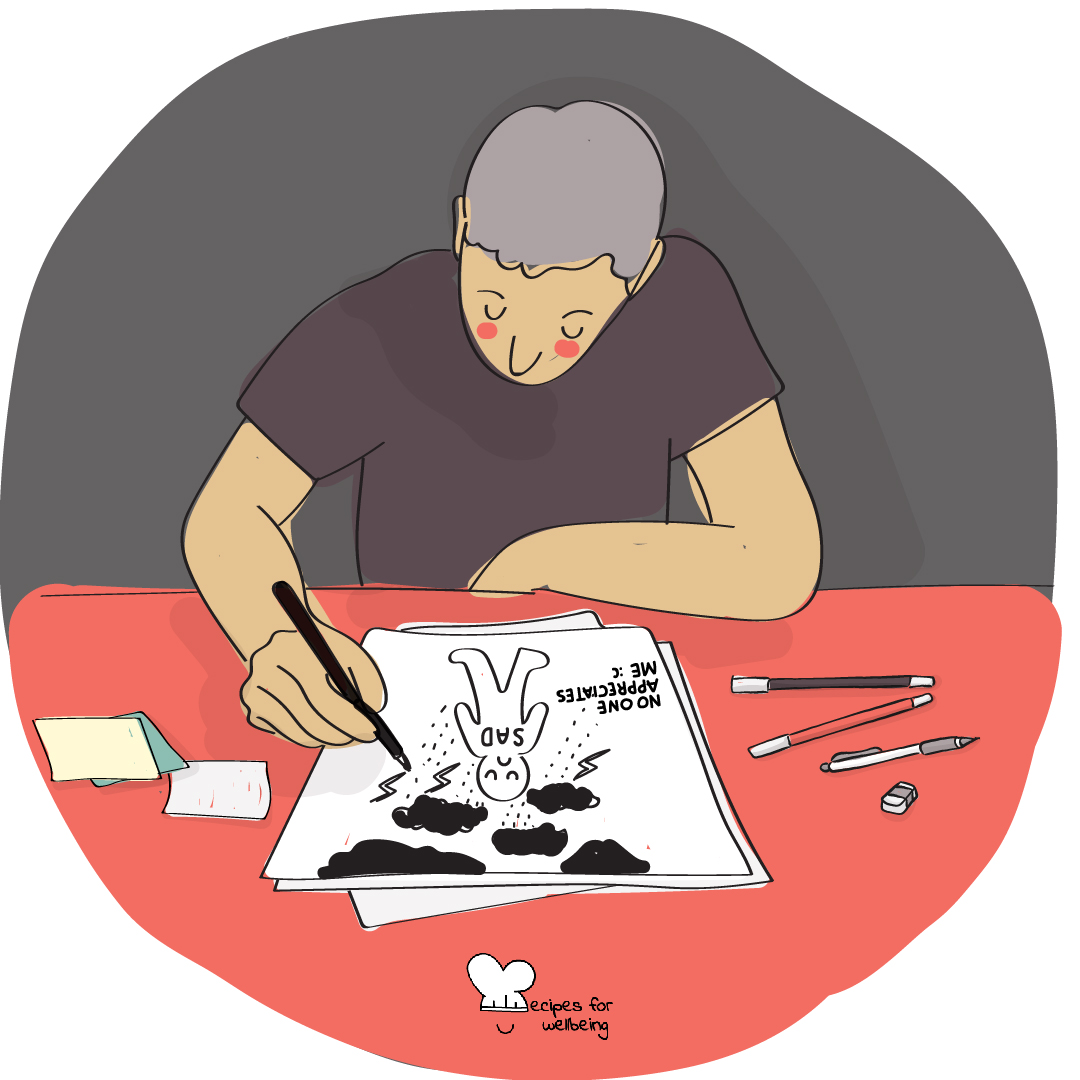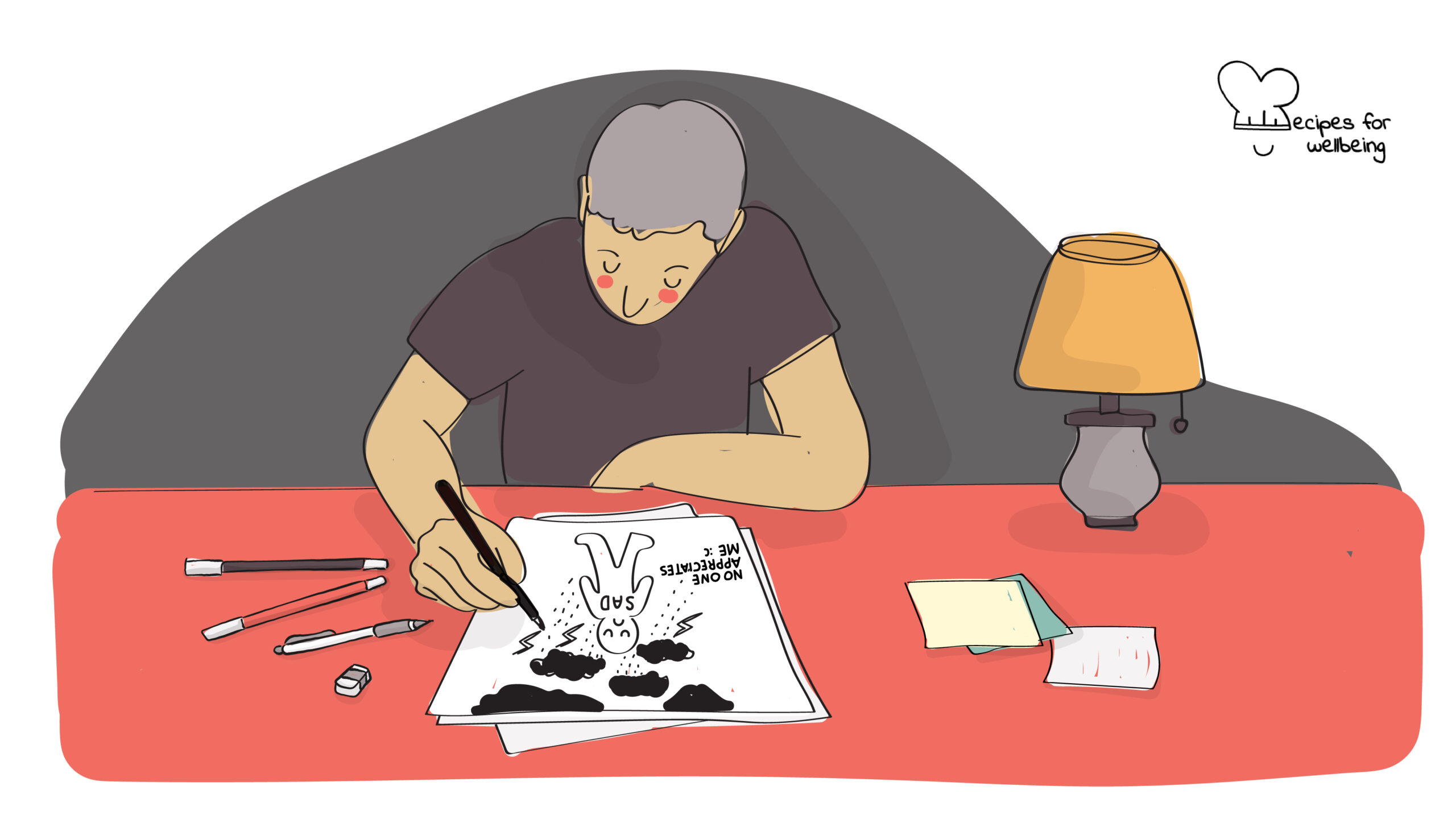
Self-compassion for your inner child
If you don’t love yourself, you cannot love others. You will not be able to love others. If you have no compassion for yourself then you are not able of developing compassion for others. ―His Holiness the Dalai Lama
👥 Serves: 1 person
🎚 Difficulty: Medium
⏳ Total time: 11-30 minutes
🥣 Ingredients: Templates (please download the activity templates provided), 5-10 markers (have both coloured and black markers or pens)
🤓 Wholebeing Domains: Awareness, Discomfortability, Positive Emotion
💪 Wholebeing Skills: Acceptance, Compassion, Forgiveness, Letting go, Non-judgement, Perspective, Reflection, Self-regulation, Solitude

Self-compassion for your inner child
📝 Description
A creative activity to boost self-compassion.
The following activity has been taken from Dr Rick Hanson’s course The Foundation of Well-Being. The course guides you through a journey of 12 pillars for well-being and provides you with a set of tools and resources to rewire your brain to be happy.
This activity, realised by Lauren Hanson, invites you to engage in a creative exploration of compassion for yourself as a child. Cultivating self-compassion is fundamental if you wish to foster compassion towards other beings, a critical element of your work as a changemaker. Moreover, self-compassion helps you to let go of feelings of unworthiness and criticism to embrace yourself as a creative, resourceful, and whole being.
The guidelines apply to nurturing compassion for yourself as a child, but you can also do it for yourself now, as an adult. If you would like to do so, repeat steps 1 through 5 using the third and fourth templates, this time using difficulties and compassionate responses in your life today.
👣 Steps
Step 1 – Explore negative feelings (5’)
Begin with the first template, a smaller figure drawn in the centre of the page. Using a black writing implement, write or draw words, phrases, or pictures inside this figure that express difficulties you felt or had as a child. Put down what feels right to you, whether this is just a feeling word or two (“hurt”, “lonely”), longer phrases (“like no one appreciates me”), or pictures (a broken heart, imagery of a face or person, etc.). Consider the impact on you as a child of both the presence of the “bad” (like a critical step-parent, or bullying in school) and the absence of the “good” (such as not much affection in your family).
Continue to write or draw until you feel you’ve written in black inside the figure as much as you’d like to address.
Step 2 – Write positive responses (5’)
Using coloured markers or other instruments, write or draw compassionate responses outside the central figure. Try at first to focus on true compassion, which we generally think about as warm-hearted soft thoughts (“may I not suffer”, “this sucks”, “I wish things weren’t this way”) and feelings (warmheartedness, “awwww”, warmth, caring).
Step 3 – Deepen the compassion (5’)
Continuing to use coloured markers, feel free to expand into other responses outside the figure of the child, such as advice (“this will pass”, “most of this pressure is self created”), affirmations (“you are so loved”, “I am worthy”) or anything else that feels right to you. Continue writing or drawing until you’ve either filled the page or you feel complete.
Step 4 – Let compassion sink in (5’)
Take some time to feel these compassionate thoughts, feelings, and wishes sinking into you, reaping the benefits of self-compassion’s dual nature of being extended from the self and received by the self.
Step 5 – Apply to yourself as an adult
The guidelines apply to nurturing compassion for yourself as a child, but you can also do it for yourself now, as an adult. If you would like to do so, repeat steps 1 through 4 using the third and fourth templates, this time using difficulties and compassionate responses in your life today.

